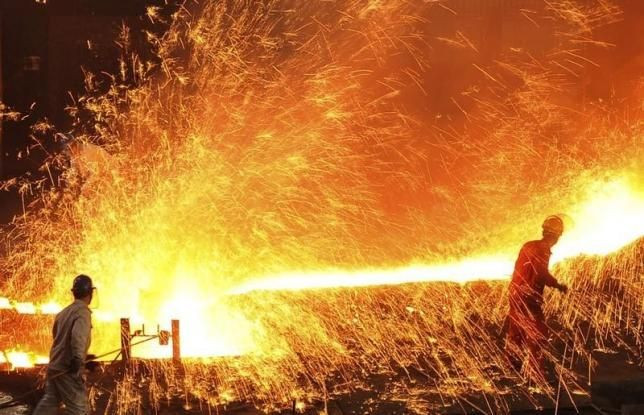China April Official PMI Shows Factories Struggling To Grow

(Reuters) - China's factories struggled to grow in April as domestic and export demand remained weak, reinforcing expectations that Beijing will roll out more measures to support the slowing economy.
The official manufacturing Purchasing Managers' Index (PMI) stood at 50.1 in April, identical to the previous month's reading and just above the 50-point mark that separates growth from contraction on a monthly basis.
Analysts polled by Reuters had predicted a reading of 50 as the world's second-largest economy continues to cool.
The country's elite Politburo said on Thursday that authorities will step up policy "adjustments" and should cut taxes further. It also said the government must resolve financing glitches which are holding up big infrastructure projects.
"Since the current slowdown is in large part a consequence of the slow-moving property market correction, growth in China likely hasn't bottomed out yet," said Bill Adams, senior international economist for PNC Financial Services Group.
"Chinese macroeconomic policies will become more accommodative this year as evidence of economic weakness accumulates."
The PMI index for new orders - a proxy for foreign and domestic demand - was unchanged at 50.2 in April from March. New export orders contracted again and at a slightly faster pace, falling to 48.1 from 48.3 in March.
Manufacturers also continued to shed jobs, and at a slightly faster clip than in March.
"The manufacturing sector is still facing downward pressures," Zhao Qinghe, an official of the bureau said in a statement accompanying the report, while arguing that economic conditions were slowly stabilizing.
Other data so far this year have indicated that the economy has lost steam despite two interest rate cuts since November, two reductions in the amount of money banks must keep in reserve and repeated attempts by the central bank to reduce financing costs.
A private, preliminary HSBC/Markit PMI survey last week showed factory activity contracted at its fastest pace in a year in April, suggesting that economic conditions are still deteriorating despite increasingly aggressive policy easing by the central bank.
The official survey looks more at larger, state-owned firms, which have been more resilient to the protracted downturn, partly due to generous government subsidies and better access to credit.
Unlike manufacturing, activity in China's services sector has remained largely robust, though it too is showing signs of cooling.
The official services PMI fell to 53.4 in April from 53.7 in March, and the lowest since January 2014, the bureau said.
Weighed down by a property downturn, factory overcapacity and high levels of local debt, China's economic growth is expected to slow to a quarter-century low of around 7 percent this year from 7.4 percent in 2014.
The economy grew at its slowest pace in six years in the first quarter of 2015 and weakness in key sectors suggested the economy was still losing momentum, intensifying Beijing's struggle to find the right policy mix to shore up activity.
© Copyright IBTimes 2024. All rights reserved.





















